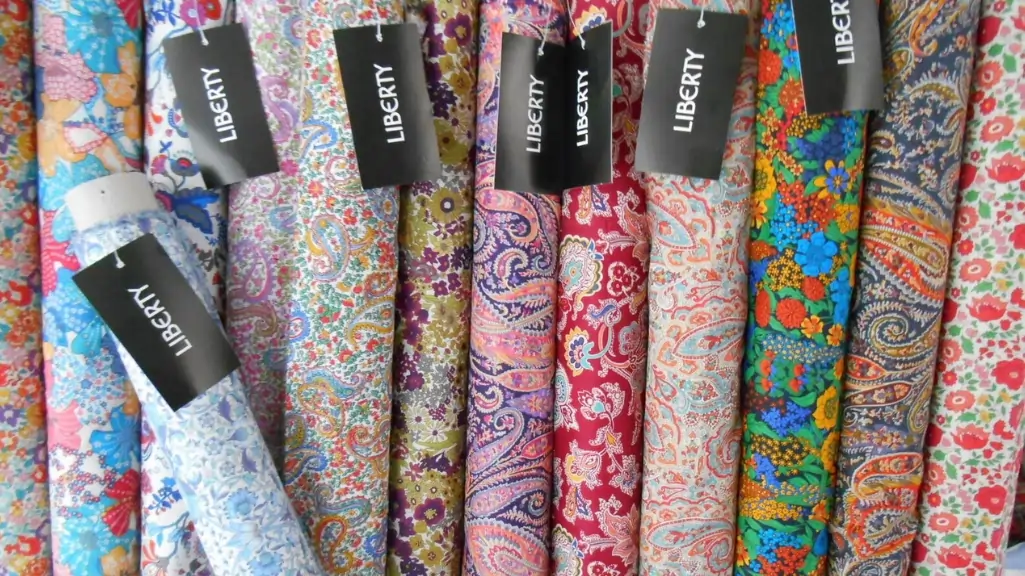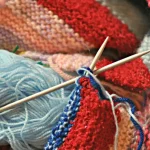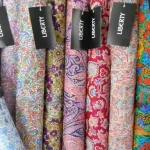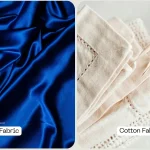Lawn fabric is a popular textile known for its lightweight, crisp texture and semi-transparent quality. It is a versatile material commonly used for making garments like dresses, blouses, skirts, and traditional clothing like salwar kameez. But what exactly makes lawn fabric special? Let’s take a closer look at its properties, how it’s made, and where it’s used around the world.
What is Lawn Cloth Fabric?
Lawn cloth is a type of lightweight, plain-weave fabric that is primarily made from cotton. It has a relatively high thread count, giving it a smooth and silky texture. This fabric is often used for spring and summer garments due to its breathable nature and soft feel. The fine threads and delicate weave contribute to lawn cloth’s sheer appearance, making it semi-transparent.
Lawn fabric is typically white, although it is often dyed or printed with various patterns. The material is especially popular in the production of women’s clothing, including dresses, blouses, skirts, and nightwear.
History of Lawn Cloth
The name “lawn cloth” originates from the French city of Laon, where this textile was first produced. Initially made from linen, the fabric gradually transitioned to cotton as imports from India became more prevalent. By the 19th century, cotton became the primary material used in the production of lawn cloth.
Lawn fabric became popular in both Europe and South Asia. It was especially well-received in India, where it became the fabric of choice for traditional outfits such as the salwar kameez. These garments are still highly popular in both India and Pakistan, where the fabric continues to be woven and printed with intricate designs.
In Pakistan, the fabric has become so integral to the fashion industry that the phenomenon of “lawn fever” occurs every spring. People flock to stores to purchase the latest lawn suit patterns, a testament to the fabric’s deep cultural significance in the region.
How Lawn Fabric is Made
Lawn cloth is produced through a plain weave method, where threads are woven alternately over and under each other. This gives the fabric its characteristic grid-like structure. The cotton fibers used in lawn cloth are either carded or combed. Combing results in finer, softer fibers, but is more expensive, while carded yarns are cheaper but slightly rougher.
The production process begins with the cultivation of cotton, where the mature cotton bolls are harvested and separated from their seeds. The resulting fibers are then spun into yarn before being woven into fabric.
Once the lawn fabric is woven, it is usually finished with a crisp touch. This is typically achieved through a starched finish, giving the fabric a smooth, crisp feel, though it is less stiff than other fabrics like organdy.
Properties of Lawn Fabric
Lawn fabric is known for its high breathability, making it perfect for hot climates. Here’s a closer look at its key properties:
| Property | Description |
|---|---|
| Composition | Mostly cotton, sometimes a blend with synthetic fibers |
| Thread Count | Typically between 150-200, fine and smooth texture |
| Breathability | High, ideal for warm weather clothing |
| Moisture-Wicking Ability | High, keeps you cool and dry |
| Heat Retention | Medium, does not trap too much heat |
| Stretchability | Slightly stretchy, but not very elastic |
| Pilling/Bubbling | Low, resistant to wear and tear |
| Recommended Washing Temperature | Medium to hot water for cleaning |
Lawn fabric is known for its softness and smooth finish, and while it doesn’t stretch much, it’s relatively resistant to pilling. This makes it a durable choice for garments that need to maintain their appearance over time.
Where is Lawn Cloth Produced?
Today, the production of lawn cloth has spread across the world. The largest producer of lawn cloth garments is Pakistan, where the fabric is woven and printed into beautiful lawn suits. These suits are a staple in the country’s fashion industry, especially in the spring.
India, while being the world’s largest producer of cotton, also plays a key role in lawn fabric production, with many manufacturers weaving and printing lawn fabric. Western designers often source lawn fabric from China or India, although Pakistan remains the primary center for finished lawn fabric.
Uses of Lawn Cloth Fabric
Lawn cloth is used in a variety of ways, from traditional garments to modern fashion. Here are some of the most common uses of lawn fabric:
- Salwar Kameez: A traditional South Asian outfit made from lawn fabric, especially in Pakistan and India.
- Dresses: Light, breathable dresses perfect for warm weather.
- Blouses and Shirts: Popular for making semi-sheer blouses and tops.
- Lingerie and Nightwear: Due to its soft texture, lawn fabric is often used to create comfortable undergarments.
- Skirts and Pinafores: Lightweight skirts and pinafores, especially for children.
- Handkerchiefs: Historically, lawn fabric was used to make fine, soft handkerchiefs.
Western designers also use lawn cloth to create garments like sheer tops, lightweight dresses, and skirts, though these applications are not as widespread as in South Asia.
Environmental Impact of Lawn Fabric
While lawn fabric is made from cotton, a natural and biodegradable material, its production can still have environmental consequences. Cotton farming, especially when practiced with chemical fertilizers and pesticides, can be harmful to the environment. These chemicals can damage soil quality, pollute water supplies, and affect local ecosystems.
However, there is a growing movement towards sustainable cotton farming practices. Organic cotton, grown without the use of harmful pesticides and fertilizers, is becoming more widely available. Additionally, many lawn fabric manufacturers are adopting eco-friendly production methods to reduce their environmental footprint.
Types of Lawn Cloth Variants
Lawn fabric has several variants, each with slight differences in texture, weight, and use:
1. Batiste
Batiste is finer and softer than regular lawn fabric, often used for ecclesiastical or formal garments due to its smooth texture.
2. Voile
Similar to lawn fabric but much thinner and softer. Voile is often used for creating delicate, airy garments and is more translucent than lawn fabric.
3. Organdy
Organdy is even crisper than lawn fabric, with a highly transparent and stiff texture. It’s often used for formal wear and lightweight overlays.
4. Nainsook
A subtype of lawn cloth, nainsook is made using combed yarn, resulting in a finer, softer fabric. It’s commonly used for baby clothes and lingerie.
5. Cambric
Cambric is very similar to batiste but has a different historical origin. It is also a fine, soft fabric, often used in making delicate garments.
Conclusion
Lawn fabric is a versatile, lightweight, and breathable textile with a rich history. Originally produced in France and now woven across the world, lawn fabric remains popular for its softness, sheer quality, and suitability for warm-weather garments. While its environmental impact depends largely on cotton farming practices, there are efforts to make the production of lawn fabric more sustainable. Whether you’re wearing a traditional lawn suit in Pakistan or a lightweight blouse in the West, this fabric continues to be a favorite for its comfort, breathability, and elegance.




